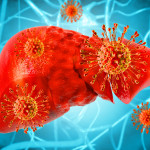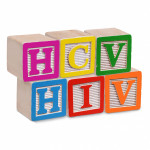Hepatitis C virus (HCV) was a major focus at the annual Conference on Retroviruses and Opportunistic Infections (CROI), which this year drew some 4,000 attendees to Boston between February 22 and 25. To follow is an overview of Hep’s reporting on hep C-related research presented at the conference, including studies on testing and treatment, the consequences of infection, and on groups at risk of contracting the virus, including injection drug users (IDUs) and men who have sex with men (MSM). Because CROI is so heavily centered on HIV science, much of the research presented concerns those who are coinfected with HIV and HCV.
To visit Hep’s CROI newsfeed, click here. You can also click on the hyperlinks below to read more about each study.
Testing and treatment:
Current guidelines recommend universal hep C testing for baby boomers—those born between 1945 and 1965—who make up the vast majority of those living with the virus in the United States. Nevertheless, screening rates in this population are low. Certain demographics of people, such as African Americans, are less likely to receive screening. Among those who do test positive, individuals with Medicaid are less likely to undergo treatment.
A look at the real-world results of Sovaldi–based treatments, including Harvoni (ledipasvir/sofosbuvir), among those coinfected with HIV, saw high cure rates. On the investigational front, among those with genotype 4 of the virus, a combination of Gilead Sciences’ investigational ravidasvir and Sovaldi (sofosbuvir), with or without ribavirin, boasted a near-perfect cure rate in a large trial. Also, in a small trial, just six weeks of Harvoni cured acute (very recent) hep C infections in HIV-coinfected individuals with a lower HCV viral load.
Among those who achieve a sustained virologic response 12 weeks after completing hep C therapy (SVR12, considered a cure), relapse of the virus is rare. However, reinfection remains a concern, with the highest rates seen among incarcerated individuals and those coinfected with HIV.
Among the benefits of a hep C cure is its association with a lowered risk of death, kidney disease and diabetes in those coinfected with HIV. (This doesn’t necessarily mean that these benefits don’t apply to those without HIV; just that this research focused on a coinfected population.)
Consequences of hep C infection:
Hep C can damage the liver over time, causing fibrosis (scarring) of the liver. Poorly controlled HIV infection, both in terms of a high viral load and a low CD4 count, is independently associated with the forward march of liver fibrosis among those coinfected with hep C. In a study of HIV/HCV-coinfected women, the severity of their liver fibrosis was linked to cognitive dysfunction. Those with moderate or severe fibrosis were more likely to have deficits in learning, higher-level cognitive skills, memory, psychomotor speed, language fluency and fine motor skills.
One study suggested that mere exposure to hep C, even if the body spontaneously clears the virus, or if an individual is cured, raises the risk of kidney disease and osteoporosis in people with HIV. But an expert in acute (very early) infection of hep C among HIV-positive individuals weighed in on this finding, questioning whether the new study failed to rule out lifestyle factors or other medical matters that may have swayed these research results.
Joining a considerable body of recent research touting the health benefits of coffee, one study found that drinking at least three cups of coffee a day is associated with a reduced risk of death among the HIV/HCV-coinfected population.
Injection drug users:
Evidence suggests that health officials were asleep at the wheel in advance of the recent massive outbreak of HIV among IDUs in a rural southern Indiana county. A high rate of new hep C cases in the area served as a forewarning of the rapid spread of HIV among the local IDU population that was to follow.
Some clinicians may be reluctant to provide hep C treatment to IDUs, fearing they will not take the medication properly. But a study of an intensive program of hep C care coordination at a Bronx, New York hospital found a high rate of success treating the virus in IDUs.
Can hep C treatment among the IDUs actually help reduce the rate of new cases of the virus among this population? Unfortunately, because of how readily hep C spreads through the sharing of needles and other drug paraphernalia, one study projected that massive scale-up of treatment among IDUs would be needed to accomplish such a task. Treatment would need to reach 90 percent of the hep C-infected IDUs in a hypothetical community (along with scaled-up harm reduction interventions). Even with all of this effort, each treatment course would only prevent an estimated 0.8 new cases of hep C.
Men who have sex with men:
Numerous past studies have identified an emerging epidemic of sexually transmitted hep C among MSM in Western nations, in particular those living with HIV. The rates of transmission appear to be rising steadily.
CROI saw more research examining this particular epidemic, including one study that found that HIV-positive MSM were more likely to be recently infected with hep C if they had casual sex partners. While the HIV/HCV coinfected MSM for the most part correctly identified drug needle and paraphernalia sharing as posing a high risk of hep C transmission, they were less aware of the sexual behaviors associated with such risk.
Another study found that crystal meth use was strongly associated with sexual transmission of hep C among MSM living with HIV.






Comments
Comments